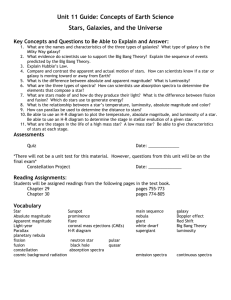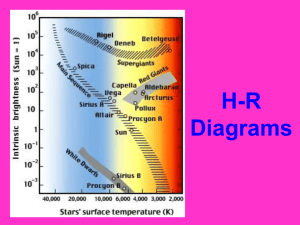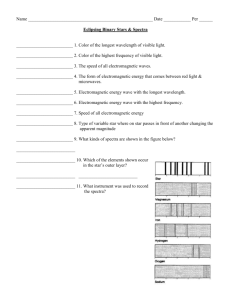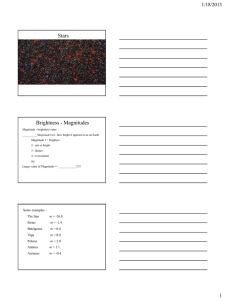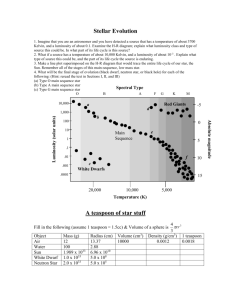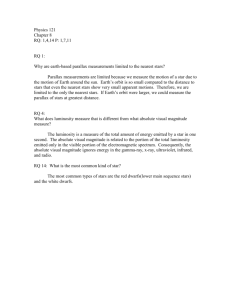Unit 12 Guide: Concepts of Earth Science Stars, Galaxies, and the
advertisement
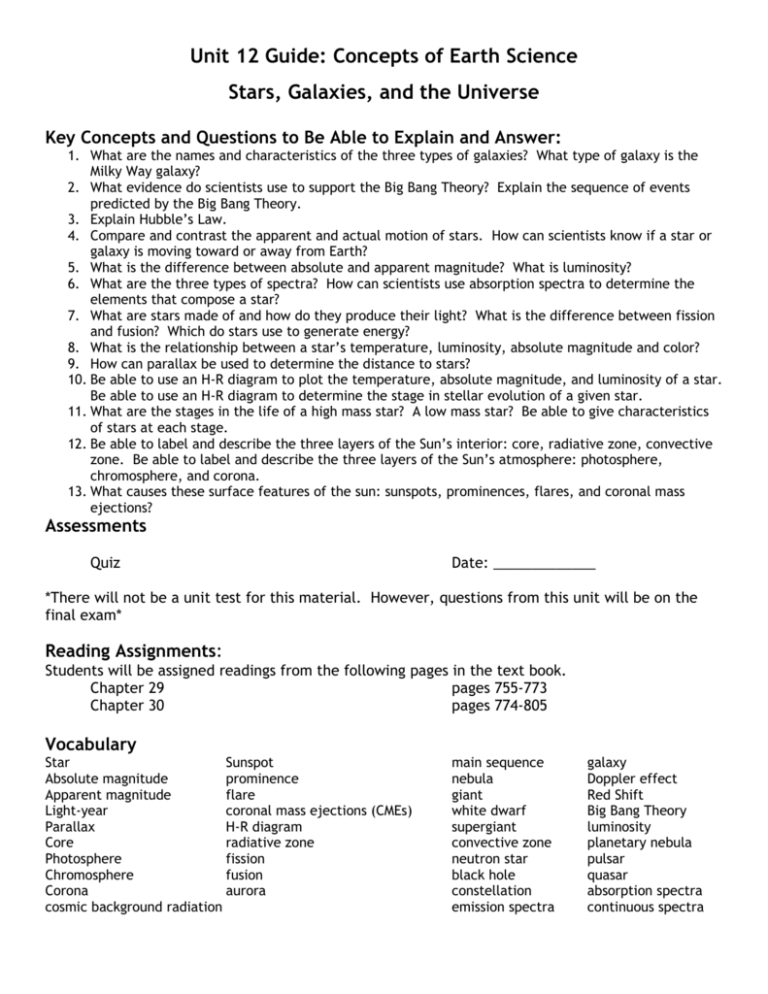
Unit 12 Guide: Concepts of Earth Science Stars, Galaxies, and the Universe Key Concepts and Questions to Be Able to Explain and Answer: 1. What are the names and characteristics of the three types of galaxies? What type of galaxy is the Milky Way galaxy? 2. What evidence do scientists use to support the Big Bang Theory? Explain the sequence of events predicted by the Big Bang Theory. 3. Explain Hubble’s Law. 4. Compare and contrast the apparent and actual motion of stars. How can scientists know if a star or galaxy is moving toward or away from Earth? 5. What is the difference between absolute and apparent magnitude? What is luminosity? 6. What are the three types of spectra? How can scientists use absorption spectra to determine the elements that compose a star? 7. What are stars made of and how do they produce their light? What is the difference between fission and fusion? Which do stars use to generate energy? 8. What is the relationship between a star’s temperature, luminosity, absolute magnitude and color? 9. How can parallax be used to determine the distance to stars? 10. Be able to use an H-R diagram to plot the temperature, absolute magnitude, and luminosity of a star. Be able to use an H-R diagram to determine the stage in stellar evolution of a given star. 11. What are the stages in the life of a high mass star? A low mass star? Be able to give characteristics of stars at each stage. 12. Be able to label and describe the three layers of the Sun’s interior: core, radiative zone, convective zone. Be able to label and describe the three layers of the Sun’s atmosphere: photosphere, chromosphere, and corona. 13. What causes these surface features of the sun: sunspots, prominences, flares, and coronal mass ejections? Assessments Quiz Date: _____________ *There will not be a unit test for this material. However, questions from this unit will be on the final exam* Reading Assignments: Students will be assigned readings from the following pages in the text book. Chapter 29 pages 755-773 Chapter 30 pages 774-805 Vocabulary Star Sunspot Absolute magnitude prominence Apparent magnitude flare Light-year coronal mass ejections (CMEs) Parallax H-R diagram Core radiative zone Photosphere fission Chromosphere fusion Corona aurora cosmic background radiation main sequence nebula giant white dwarf supergiant convective zone neutron star black hole constellation emission spectra galaxy Doppler effect Red Shift Big Bang Theory luminosity planetary nebula pulsar quasar absorption spectra continuous spectra
